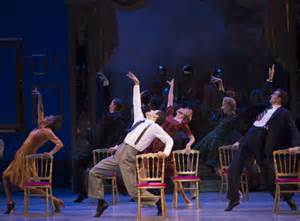

If you’re new to stage directing, there are some basic A-B-Cs of stage dynamics of which you should be aware. These dynamics, if used properly, will serve you greatly in staging a production. They did not substitute for the work you’ll do with actors and other creative people, the physical precision your show will require, or the intensive analysis of the play or musical’s themes, structure, characters, and other elements.
The use of these stage dynamics serve, rather, to create a foundation upon which all of the other work just mentioned can rest and be built upon. Using the elements outlined here will give you the underpinnings for success when mounting a stage production.
In this two-part series, we’ll focus on three basic areas of stage dynamics with each categorized in the following manner:
- The Lay of the Land
- Small, Medium, Large
- Impediments to Action
In the first part, we’ll discuss these concepts and in the second offer examples of how they can work in a practical sense.
The Lay of the Land

The lay of the land in terms of directing relates to the stage, its relationship to the audience, the play or musical being produced, and the ultimate scenic design elements that will be used. These four factors must be carefully studied, defined, and analyzed before any decisions regarding stage space and how it’s to be used can be made.
The first elements to understand are the stage space and its relationship to the audience. After that, a director needs a solid understanding of the movement of the script in terms of its progression, number of characters, overriding arc, develop of themes, and other attributes such as tempo, rhythm, and mood.
Thus, first, the following three elements must be understood:
- The stage space
- Stage’s relationship to audience
- The workings of the play or musical
Once these three elements are understood, the director can start to get a feel for how the space should be used for the specific show. If you don’t completely understand the first three elements in a spatial sense, it’s very difficult as a director to then discuss the play with a scenic designer, as you won’t be able to relay general or specific spatial concepts. Remember, the designer is not directing the play, you are. That means you have to come to the table with strong ideas regarding how the physical space needs to be used to create the effect you want to achieve.
Small, Medium, Large

Small, medium, large refers to just about every aspect of the physical stage, including the playing spaces, special scenic elements, elevated surfaces, furniture, props, etc. A director has limitless choices as far as such elements are concerned and each choice he/she makes is directly related to how well they will use the dynamics of their space in terms of how it relates to physical action.
As a basic example, the size of a bench around and on which a scene is to be played can greatly influence the power of that scene, character relationships, and the progression of the action. There’s no “right” choice all the time, as one scene might benefit from a 2-foot bench, another from a 4-foot, and another from a 6 to 8-foot one.
Impediments to Action
Physical impediments can sometimes be good when properly incorporated into a production and, at other times, they will work against it. Making decisions regarding such impediments, which may include furniture placement, doors, windows, and exits and entrances, and an array of props and set dressings, will influence how the stage is used and the energies the space will perpetuate.
Something Is Not Quite Right
If a director doesn’t utilize dynamics effectively someone watching may not be able to identify the specific problem with the show, but they do know that what they are observing is flat, enervated, uneven, and/or uninteresting. And although the reasons for such does not always have to do with a failure to effectively utilize the dynamics of the stage, still, too often directors undermine themselves, the production, the actors, and the show by not taking the time to match the power of the play with the potential power of the physical stage.
Space is everything in the theatre. At the very least, every director needs to understand this. In the second and final part of this series on stage dynamics, we’ll discuss some specific examples related to these concepts.

 Random Item
Random Item